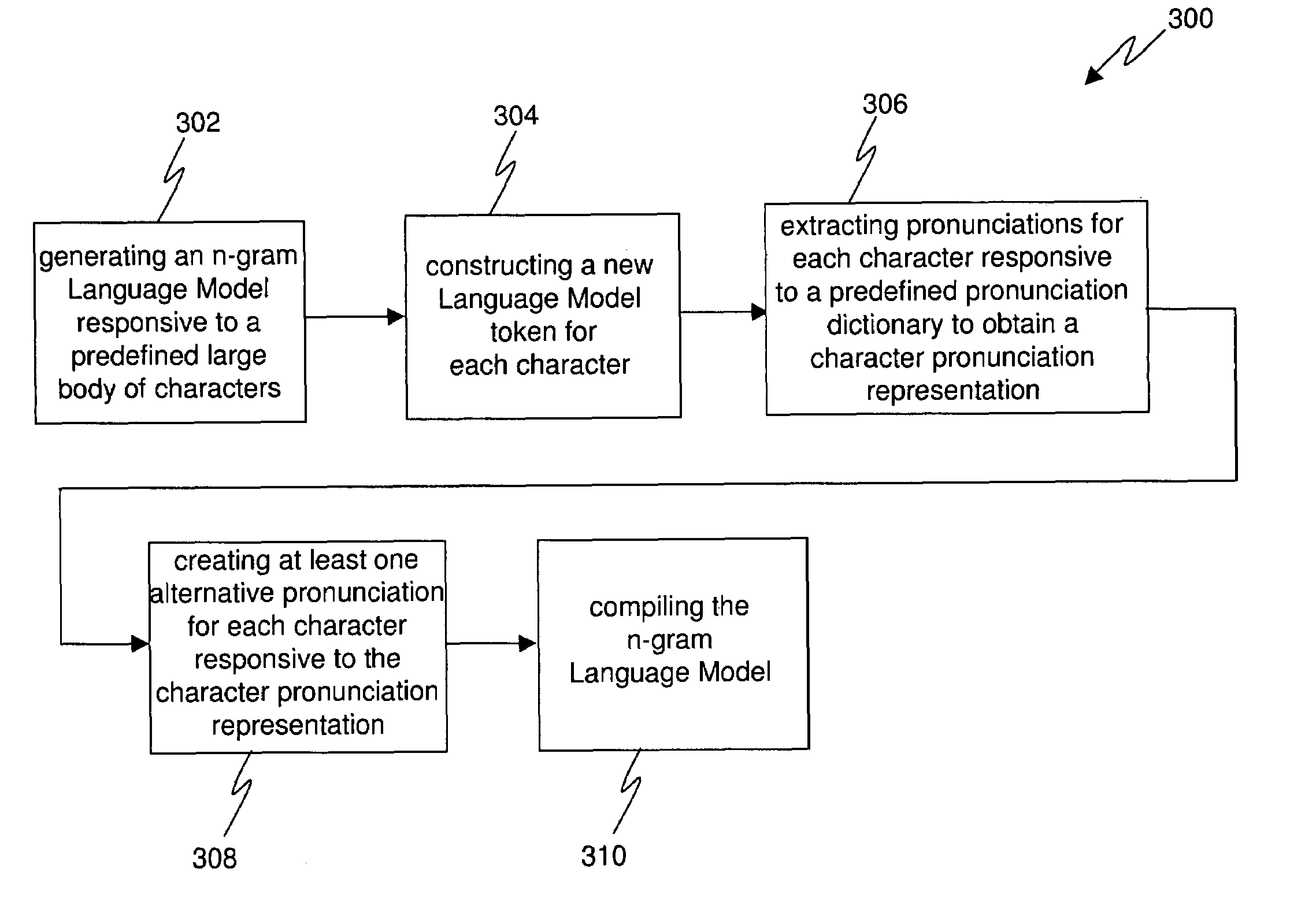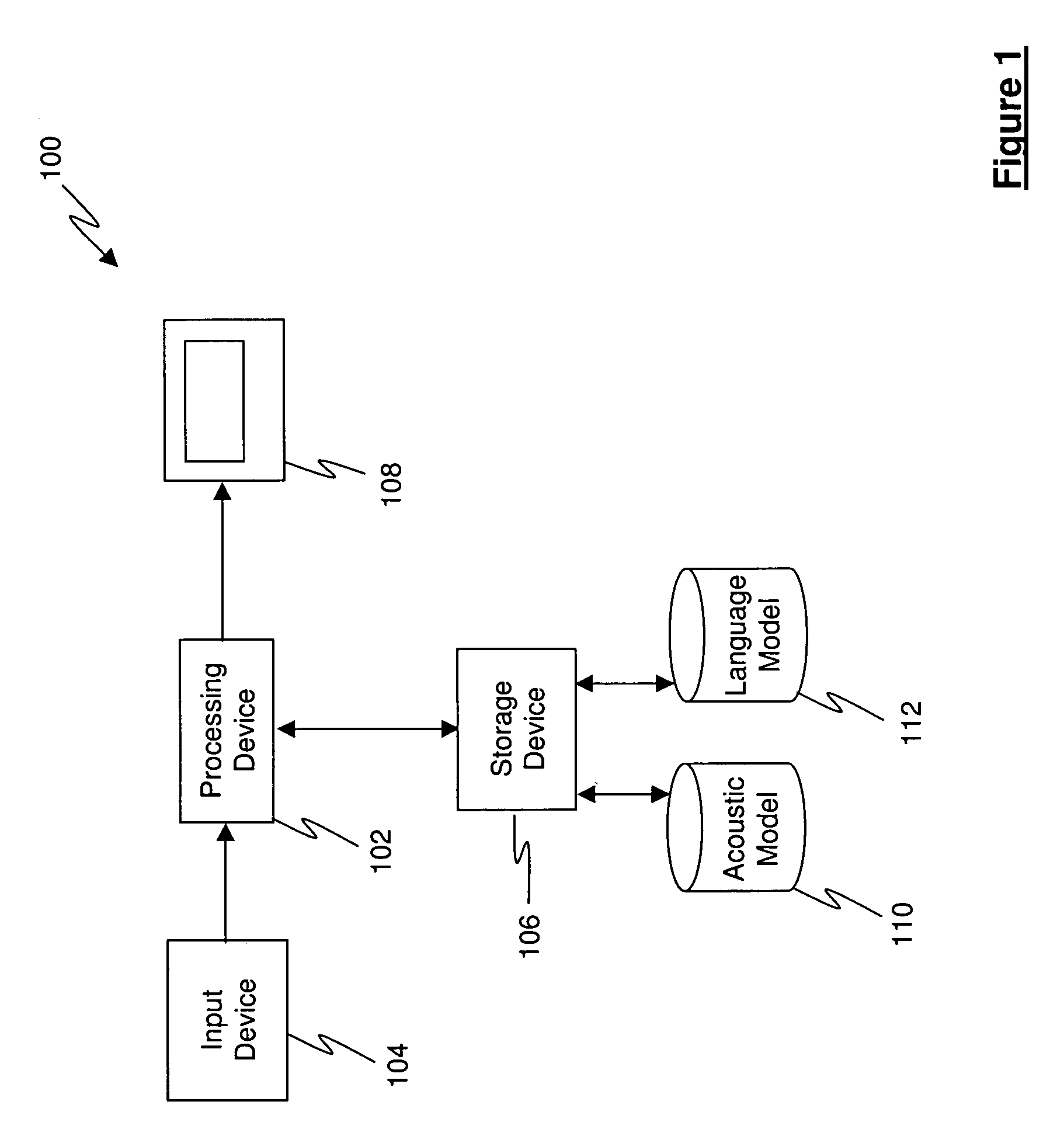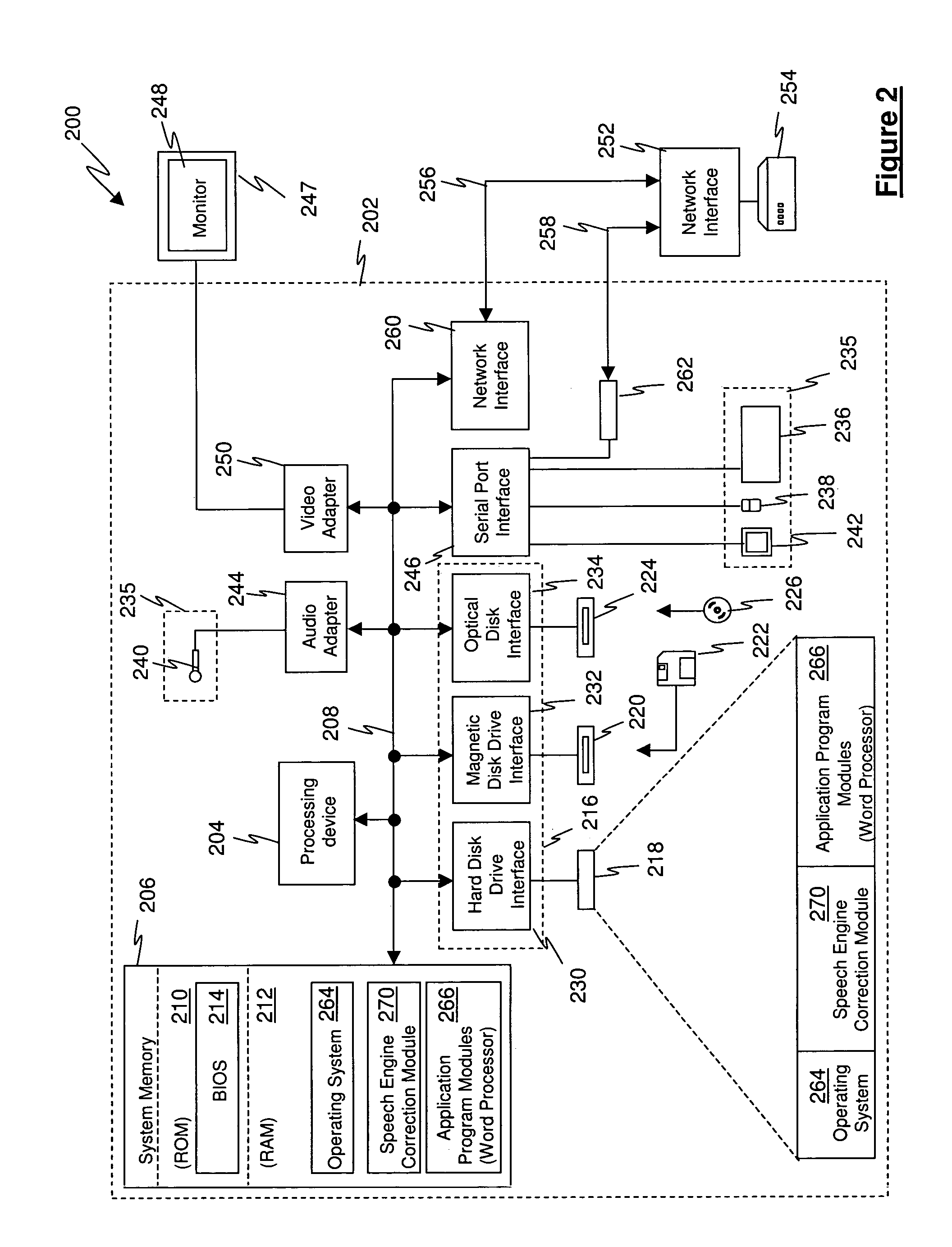Generic spelling mnemonics
a mnemonic and generic technology, applied in the field of generic spelling mnemonics, can solve the problems of alienating the novice user, affecting the interaction between the speaker and the computer, and frustrating the experienced user
- Summary
- Abstract
- Description
- Claims
- Application Information
AI Technical Summary
Benefits of technology
Problems solved by technology
Method used
Image
Examples
Embodiment Construction
[0016]Most speech recognition applications employ a model of typical acoustic patterns and of typical word patterns in order to determine a word-by-word transcript of a given acoustic utterance. These word-patterns are then used by speech recognition applications and are collectively referred to as Language Models (LM). As such, a Language Model represents word sequences and the probability of that sequence occurring in a given context. Thus, in order to be effective in speech recognition applications, a Language Model must be constructed from a large amount of textual training data. It should also be appreciated that mnemonics may be used to great effect when used to correct the spelling of a word using a desktop speech recognition software application. For example, one scenario may involve a user attempting to spell a word without using mnemonics and is now in the situation where the speech recognition software application has misrecognized one (or more) of the letters that were c...
PUM
 Login to View More
Login to View More Abstract
Description
Claims
Application Information
 Login to View More
Login to View More - R&D
- Intellectual Property
- Life Sciences
- Materials
- Tech Scout
- Unparalleled Data Quality
- Higher Quality Content
- 60% Fewer Hallucinations
Browse by: Latest US Patents, China's latest patents, Technical Efficacy Thesaurus, Application Domain, Technology Topic, Popular Technical Reports.
© 2025 PatSnap. All rights reserved.Legal|Privacy policy|Modern Slavery Act Transparency Statement|Sitemap|About US| Contact US: help@patsnap.com



